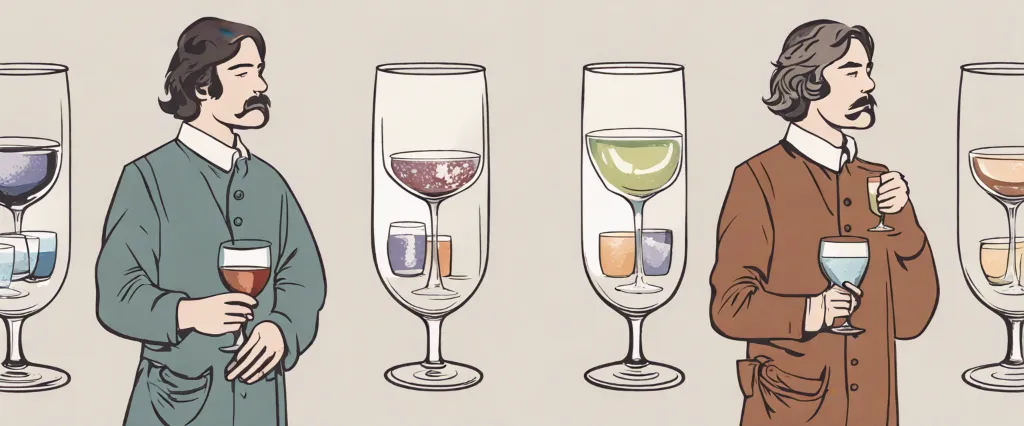In his captivating book, “A History of the World in 6 Glasses,” Tom Standage takes readers on an enlightening journey through time, charting the pivotal role of six iconic beverages in shaping human civilization. With a keen eye for historical connections and a knack for storytelling, Standage delves deep into the origins and cultural significance of these libations, revealing the powerful impact they had on human societies from ancient times to the modern world. Known for his thought-provoking and accessible writing style, Tom Standage is an acclaimed British author and journalist, renowned for his expertise in exploring the intersection of history and technology. With a multitude of insightful publications to his name, Standage masterfully weaves together historical narratives with current affairs, offering readers a fresh perspective on key moments in human history.
Chapter 1: Beer: The Cradle of Civilization
Chapter 1 of “A History of the World in 6 Glasses” by Tom Standage explores the role of beer as the “cradle of civilization.” The chapter delves into the origins and impact of beer on early human societies, highlighting its importance in the development of agriculture, the formation of complex communities, and the rise of civilization.
Standage begins by explaining how beer served as the catalyst for the transition from hunter-gatherer societies to settled agricultural communities. He reveals that the cultivation of grains, primarily barley, was initially driven by the desire to produce beer rather than bread. People realized that fermenting grains into beer provided a safe and nutritious alternative to drinking water contaminated with harmful bacteria, and this discovery encouraged them to settle in one place, leading to the birth of agriculture.
The author explores the ancient Sumerian civilization, which stood at the forefront of beer production and consumption. Beer played a crucial role in their daily life, being a medium for religious rituals, an economic currency, and a staple of their diet. Standage reveals how Sumerians developed advanced brewing techniques, introducing concepts such as fermentation, yeast, and brewing recipes.
Furthermore, Standage highlights the societal importance of beer in Sumeria, where it was considered a gift from the gods and used as a basis for religious ceremonies and social gatherings. Beer was seen as a means to connect with the divine and served as a fundamental part of their cultural and religious practices.
Ultimately, Chapter 1 of “A History of the World in 6 Glasses” paints a picture of beer as a transformative and unifying force in human history, paving the way for the development of agriculture, profound cultural practices, and the birth of civilization itself.
Chapter 2: Wine: The Grape’s Journey
Chapter 2 of “A History of the World in 6 Glasses” by Tom Standage explores the origins and significance of wine. Standage begins by emphasizing the importance of wine as a symbol of civilization and its deep-rooted connection with the development of agriculture and settled societies.
The chapter delves into the ancient origins of wine, tracing its roots back to the Neolithic period in the Near East. The discovery of fermenting grapes and the subsequent production of wine led to the establishment of vineyards and the transformation of nomadic cultures into agricultural ones. Wine became an integral part of religious and social ceremonies, as well as a medium for trade and a status symbol among the elite.
Standage discusses the influential role of the Phoenicians, who spread viticulture and winemaking techniques across the region through their expansive maritime trade network. The Greek civilization then inherited this knowledge and elevated wine to an art form, attributing it with divine origin and associating it with Greek mythology. The author also shares the story of how wine came to Rome, spreading eventually throughout the Roman Empire, playing a significant role in both religious practices and social gatherings.
Furthermore, Standage explores the impact of wine on society, such as its association with Dionysus, the god of wine, and its role in Greek theater, where wine was used to enhance emotions and performances. Additionally, wine played a significant part in the spread of Christianity, as it became central to the concept of the Eucharist.
In summary, Chapter 2 highlights the historical significance of wine, starting from its Neolithic origins and following its journey through ancient civilizations. Wine has not only influenced social and religious practices but has also been a catalyst for the development of settled societies, trade networks, and cultural exchange.
Chapter 3: Spirits: The Rise of Distilled Beverages
In Chapter 3 of “A History of the World in 6 Glasses” by Tom Standage, titled “Spirits: The Rise of Distilled Beverages,” the author explores the emergence and impact of distilled beverages throughout history. Standage begins by examining the origins of distillation in ancient civilizations, particularly in the Arab world. He highlights how the technique initially developed as a means of producing perfumes and medicinal potions.
The chapter then delves into the significance of distilled beverages, such as spirits, during the Renaissance and the Age of Exploration. Standage discusses how the distillation process improved, allowing for the production of stronger alcoholic drinks like brandy and rum that could withstand long sea voyages, becoming integral in European maritime expansion.
The rise of spirits also had an impact on global trade, leading to the establishment of colonial enterprises. For instance, Standage explains how rum influenced the Atlantic slave trade, as it became one of the main commodities exchanged for slaves in Africa. He further examines how spirits, specifically brandy, played a role in European political affairs, including the Dutch revolt against Spain and the Thirty Years’ War.
Standage also highlights the role of the British gin craze, which swept across London in the 18th century. He explores how the availability and affordability of gin led to widespread social issues, alcoholism, and governmental intervention to control the consumption of spirits.
In conclusion, Chapter 3 explores the historical trajectory of distilled beverages, demonstrating the diverse and far-reaching impacts they had on the world, from trade and colonization to socio-political movements.
Chapter 4: Coffee: The Age of Reason

Chapter 4 of “A History of the World in 6 Glasses” by Tom Standage, titled “Coffee: The Age of Reason,” explores the rise and impact of coffee in the 17th and 18th centuries. Coffee, first discovered in Ethiopia, quickly spread to the Islamic world, Europe, and eventually became a global phenomenon.
The chapter begins by highlighting coffee’s cultural significance in the Islamic world. As a stimulant, it was initially used by Muslims to stay awake during long religious prayers, later becoming associated with Sufism, a mystical branch of Islam. Coffee houses also emerged as social spaces for intellectual discussions, fostering a crucial aspect of Islamic culture.
From Islamic territories, the chapter shifts focus to Europe, where coffee arrived in the 17th century. Initially met with suspicion and even banned due to its association with Islamic culture, coffee consumption eventually gained popularity. Coffee houses emerged in cities such as London and Paris, becoming hubs for political, economic, and social discourse. Coffee houses were egalitarian spaces where people from different backgrounds could engage in discussions, fuelling the development of new ideas.
Standage emphasizes how coffee contributed to the Enlightenment era and the age of reason. As people congregated in coffee houses, they exchanged knowledge and ideas, encouraging scientific progress, rational thinking, and individualism. Coffee became an integral part of the intellectual and cultural transformation of Europe, with writers and philosophers frequently discussing and debating in these social spaces.
Moreover, Standage highlights how the industrial revolution was fueled by coffee consumption, as its stimulating effects helped workers stay productive during long hours. This further contributed to the rise of cities and the expansion of industry.
In summary, Chapter 4 of “A History of the World in 6 Glasses” explores the pivotal role of coffee in the Age of Reason, as it spread from the Islamic world to Europe, fueling intellectual and cultural transformations. Coffee houses became centers of knowledge exchange, nurturing the Enlightenment era and shaping the world we live in today.
Chapter 5: Tea: Empire and Industrialization
Chapter 5 of A History of the World in 6 Glasses by Tom Standage, titled “Tea: Empire and Industrialization,” explores the rise and influence of tea as a beverage during the 18th and 19th centuries.
The chapter starts by describing how the British developed a preference for tea over coffee due to its lower price and accessibility. Standage explains that the British East India Company played a crucial role in creating and maintaining a steady supply of tea from China, ultimately establishing a monopoly over the tea trade. Tea quickly became the national drink in Britain, with people from all social classes embracing the beverage.
The author highlights the significant impact of tea on British society and economy. The rise in tea consumption paralleled the Industrial Revolution, as tea provided fuel for the factory workers, along with the caffeine needed to increase productivity. Standage elaborates on how tea breaks became an integral part of the working day, improving morale and preventing fatigue.
Furthermore, the chapter explores the cultural and social dimensions of tea consumption. Tea became an element of an elaborate ritual, involving fashionable tea sets, etiquette, and even tea gardens. The author also emphasizes the connection between tea and the sugar trade, as the British increasingly sweetened their tea with sugar imported from the Caribbean, further fueling the triangle trade between Britain, China, and the New World colonies.
Standage sheds light on how the British Empire’s influence extended beyond their own tea consumption. They broadened the global reach of tea, introducing it to new territories and establishing tea plantations in India to rival China’s monopoly. This expansion ultimately led to the Opium Wars between Britain and China, where tea played a central role.
In conclusion, Chapter 5 delineates how tea became an emblem of Britain’s economic and imperial power, as well as its influence on social customs and global trade networks.
Chapter 6: Coca-Cola: Globalization and the American Century
Chapter 6 of “A History of the World in 6 Glasses” by Tom Standage focuses on the rise of Coca-Cola as a symbol of American culture and globalization. Standage starts by highlighting how the introduction and popularization of Coca-Cola coincided with the American Century, where the United States became a dominant global force after World War II.
Coca-Cola’s success can be attributed to its understanding of branding, marketing, and tapping into the aspirations and desires of consumers. Standage lays out how the company successfully associated Coca-Cola with happiness, youthfulness, and the American lifestyle. This image led to the spread of Coke’s influence worldwide, as it became not just a beverage but also a symbol of American values and ideals.
Standage discusses various ways in which Coca-Cola actively contributed to globalization. First, he explains how the company leveraged its brand power to become a prominent presence in foreign markets. Coca-Cola not only exported its product but also set up bottling plants and created local subsidiaries, which helped it assimilate into different cultures while maintaining its American identity.
Second, Standage explores Coca-Cola’s role in promoting American values and consumerism internationally. The company cleverly used its advertisements to portray the American way of life as superior, enticing consumers in other countries to embrace American culture through consumption. Coca-Cola became a symbol of modernity and progress, and its popularity soared as it crossed borders.
Lastly, Standage discusses how Coca-Cola played a political role during the Cold War era. The company, often seen as a symbol of American capitalism, used its presence in Communist countries like the Soviet Union and China as a way to assert itself as a representation of American democracy and freedom.
In short, Chapter 6 emphasizes the significance of Coca-Cola in shaping the global market, spreading American ideals, and acting as a powerful symbol of the American Century and globalization as a whole.
Chapter 7: Water: The Quest for Purity
Chapter 7 of “A History of the World in 6 Glasses” by Tom Standage focuses on water and its journey towards purity. The chapter explores how civilizations throughout history have recognized the importance of clean water and how they have tried to ensure its purity.
Standage begins by highlighting the immense value of clean drinking water, both for personal health and as a way to prevent diseases. He traces back the early civilizations of Mesopotamia and Egypt, where there were regulations for clean water and methods such as boiling, straining, or using natural filtration techniques like sand and gravel. The chapter also discusses the development of aqueducts in ancient Rome, which played a vital role in supplying cities with clean water from distant sources.
The author then moves on to describe the role of brewing and beer in promoting clean water during the medieval period. Due to the boiling process involved in beer production, it became a more reliable alternative to unclean water as a source of hydration. Furthermore, beer consumption increased considerably, as people believed it was safer to consume than water.
Standage also delves into the advent of tea and coffee in the 17th and 18th centuries, highlighting their significant role in sterilizing water. The boiling required for these beverages, coupled with their popularity, led to a cultural shift in drinking habits, particularly in countries like Britain and America.
Finally, the chapter discusses the development of modern water purification techniques and the importance of public health campaigns for maintaining clean water supplies. The author emphasizes the role of chemical disinfectants, such as chlorine, in making water safer to drink and the global efforts made to bring clean drinking water to communities around the world.
Overall, Chapter 7 of “A History of the World in 6 Glasses” traces the quest for purity in water, highlighting the various methods employed throughout history and the enduring significance of clean drinking water for human civilization.

Chapter 8: The Future of Beverages: Trends and Innovations
In Chapter 8 of “A History of the World in 6 Glasses” by Tom Standage, titled “The Future of Beverages: Trends and Innovations,” Standage explores current beverage trends and provides insights into potential future developments in the drinks industry.
Standage begins by highlighting the growing importance of water as a beverage. With concerns over global warming and the availability of clean drinking water, the author discusses various alternatives to bottled water, such as tap water and technological advancements like solar disinfection methods.
He then moves on to coffee, focusing on its global popularity and the emergence of specialty coffee shops. Standage predicts that as coffee continues to evolve, its production will become more sustainable and eco-friendly.
The next beverage explored is tea, which has witnessed a resurgence in popularity due to health benefits and a growing interest in tea ceremonies. Standage highlights the potential for new tea flavors and the use of technology in tea production and brewing.
The chapter also discusses the future of beer, including craft breweries, new brewing techniques, and the rise of homebrewing. Standage predicts that consumers will continue to seek unique and personalized beer experiences in the future.
Wine is another area of focus, with the author discussing the impact of climate change on vineyards and the potential for more sustainable practices in wine production. Standage also explores the rise of natural wines and the increasing popularity of wine tasting experiences.
Lastly, the chapter touches on spirits, such as whiskey and vodka, highlighting the growing interest in artisanal and locally produced spirits. Standage predicts that these trends will continue, with a focus on small-batch distilleries and innovative flavor combinations.
Overall, Standage presents a glimpse into the future of beverages, emphasizing sustainability, technological advancements, and consumer preferences for unique and personalized experiences.
After Reading
In conclusion, A History of the World in 6 Glasses by Tom Standage provides a fascinating and insightful journey through human history by examining the impact of six essential beverages: beer, wine, spirits, coffee, tea, and cola. Through meticulous research and engaging storytelling, Standage brilliantly demonstrates how these drinks shaped societies, influenced politics, sparked innovation, and reflected cultural values across different time periods and geographic regions. By viewing world history through the lens of these beverages, Standage effectively highlights the interconnectedness of humanity while shedding light on the power of beverages to shape our social, political, and economic landscapes. This book ultimately serves as a testament to the profound impact that seemingly mundane drinks can have on the course of human civilization.
1. “Savor: Mindful Eating, Mindful Life” by Thich Nhat Hanh – This book explores the concept of mindful eating and its benefits for both physical and mental well-being. It offers practical tips and meditative exercises to help readers develop a healthier relationship with food and cultivate a greater appreciation for every meal.
2. Cooked: A Natural History of Transformation” by Michael Pollan – In a similar vein as “A History of the World in 6 Glasses,” this book delves into the significance of cooking throughout human history. Pollan examines the transformative power of fire, water, air, and earth on our food, weaving together stories, history, and personal anecdotes to provide insights into the cultural, social, and environmental roles of cooking.
3. “Veganomicon: The Ultimate Vegan Cookbook” by Isa Chandra Moskowitz – For those interested in exploring plant-based cooking, “Veganomicon” is a comprehensive and accessible cookbook. Filled with delicious recipes, helpful tips, and nutrition information, it showcases the diverse and exciting possibilities of vegan cuisine, catering to both beginners and experienced cooks alike.
4. “Animal, Vegetable, Miracle: A Year of Food Life” by Barbara Kingsolver – This captivating memoir takes readers through a year-long journey as the author and her family commit to eating only locally grown and produced food. Kingsolver provides insight into the environmental and ethical implications of our food choices while sharing mouthwatering recipes and highlighting the joy of reconnecting with the earth and our food sources.
5. The Omnivore’s Dilemma: A Natural History of Four Meals” by Michael Pollan – Another thought-provoking work by Pollan, this book explores the complex web of choices we encounter when it comes to our food. It examines the social, environmental, and economic implications of our food systems, urging readers to critically analyze the consequences of their dietary decisions and encouraging a more conscious approach to eating.



